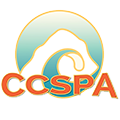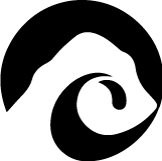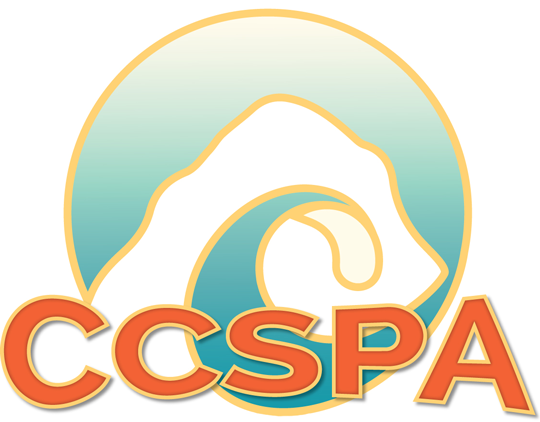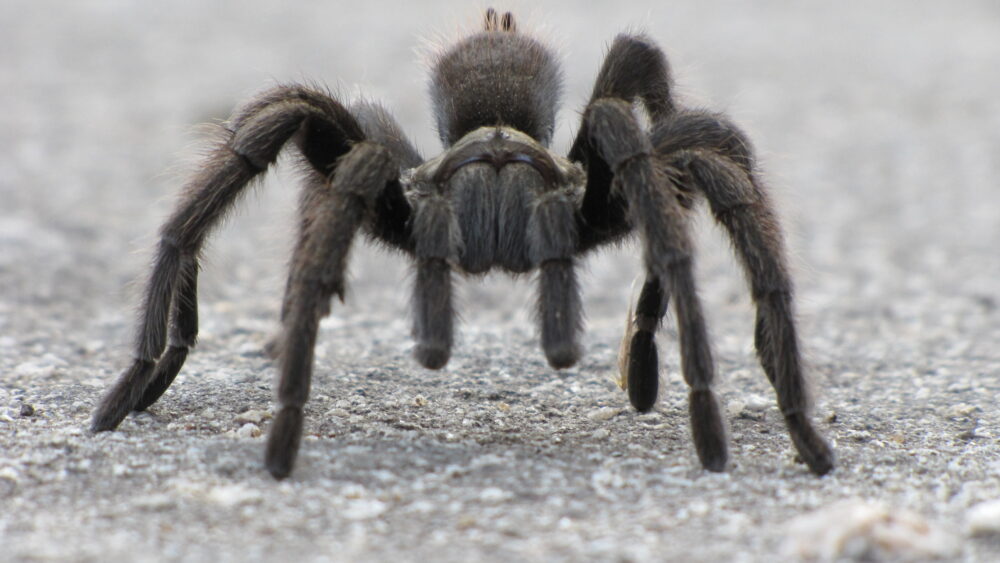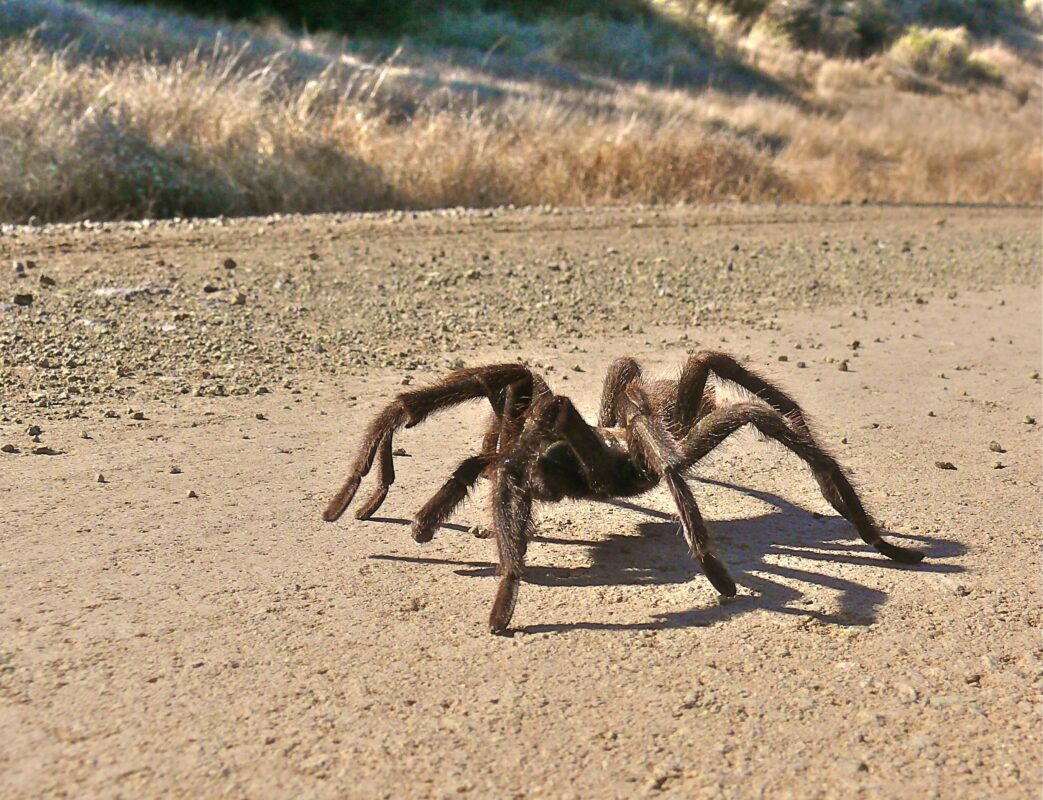
The tarantulas are showing up on the central coast. From mid-July on through November you have a chance of seeing one of these large, hairy spiders walking along a trail or crossing a road. What is going on? It is not a migration. Males are looking for females to mate! A male may travel a half- mile to find a mate. That’s a lot of steps.
We actually have two types of tarantulas here on the Pacific coast. Difficult to tell apart, but the summer breeders tend to be almost black in color, while the fall breeders are dark brown. They are both large with bodies up to 3 inches in length with relatively long legs. They are hairy over the entire body and legs, with hairs on the abdomen that can be brushed off by the spider in defense. These hairs cause a burning sensation and can create a rash. Another means of defense are their large fangs. Luckily, most tarantulas are docile and won’t bite. Their venom is not harmful to humans, but their bite can be painful.
Tarantulas are sedentary and stay near their burrows, which they dig themselves. They line the vertical burrow with silk and create a lid of soil and silk. The burrow may be 40 inches deep with numerous side chambers and a horizontal den. They are ambush predators, detecting their prey by vibrations, not eyesight. Most of their hunting is done within a few feet from their burrow. They drag their prey down into the burrow to feed and then deposit the debris in the side chambers. During winter months they will close the opening with a dirt and silk plug to avoid rain.
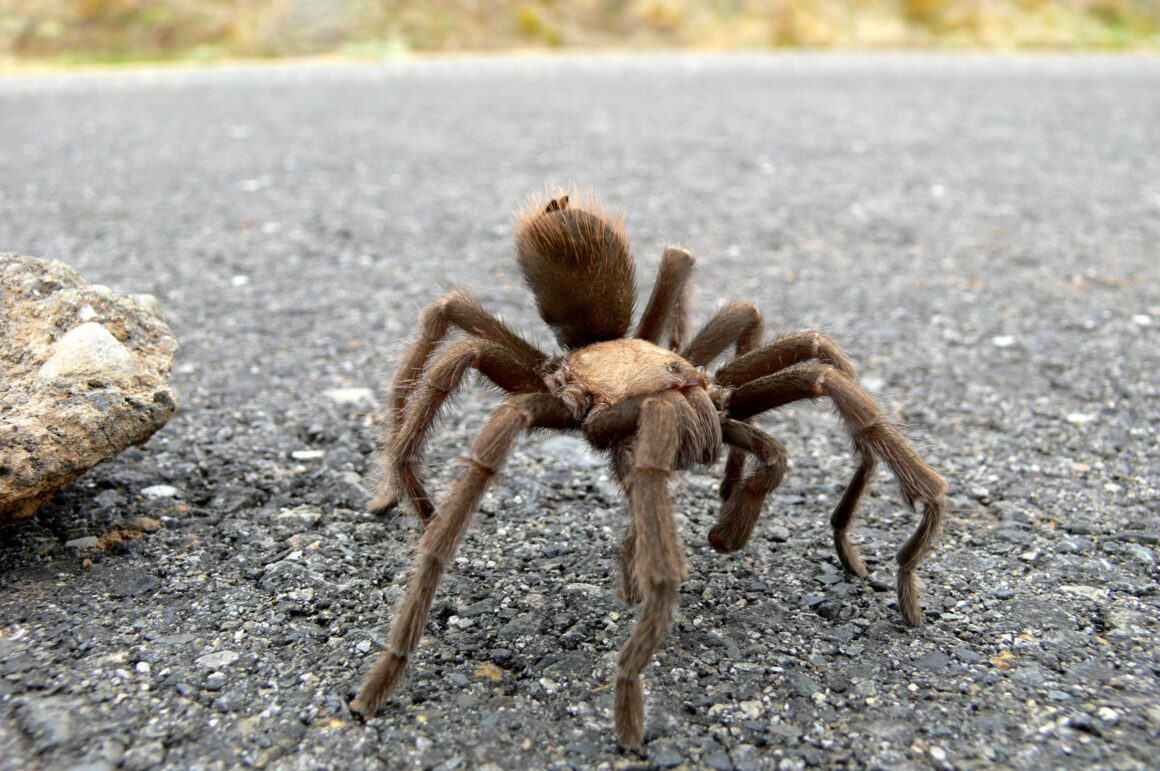
Mature males meander around trying to find a female’s burrow, recognized bypheromones in her silk. Once found, the male will tap on the lid with its pedipalps (the short, three jointed appendages on each side of the fangs) and front legs. They can also move rapidly up and down, making a squeaking sound for the female. If she is receptive she will drum back. She then comes out of her burrow and rises upward and they grapple together to mate. If you look closely at a wandering tarantula you can see the spurs on the inside of the second joint of the front legs. These are used to hold the female’s fangs during mating so she won’t bite him. After mating the male retreats. Typical of many spiders, females may eat the males after breeding.
Males die soon after reaching maturity while females in captivity have been know to live for as many 30 years. There is still much to be learned about these amazing animals.
